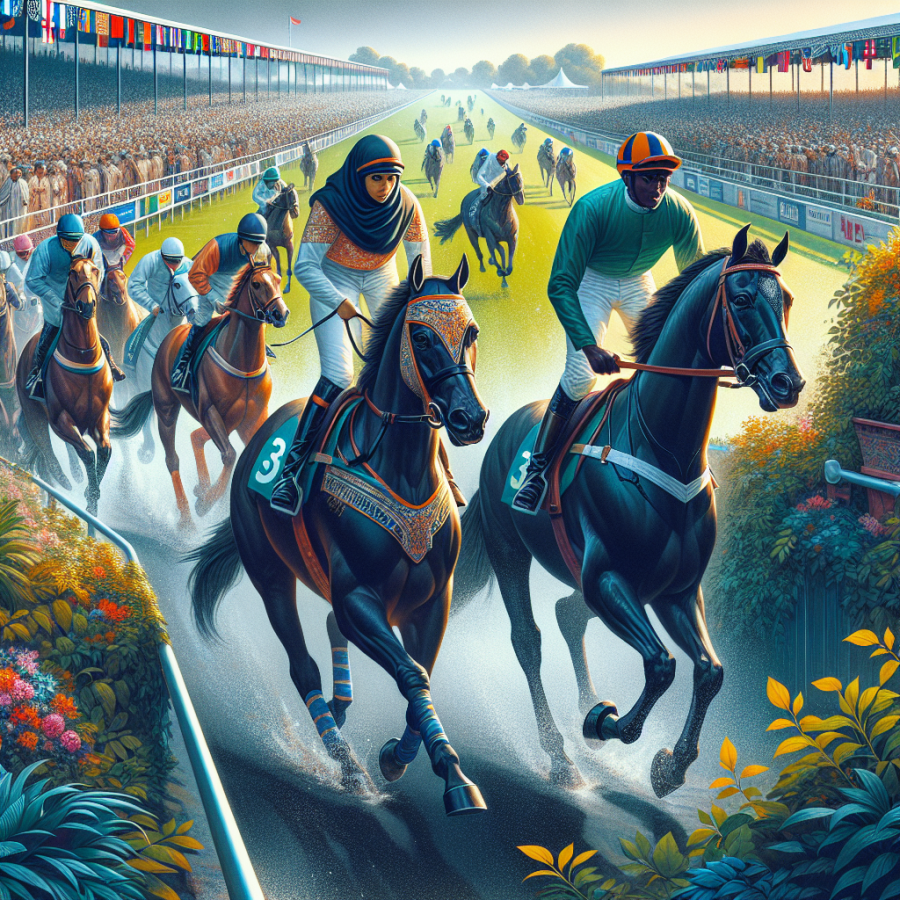Mastering the Course: Inside the Equestrian Competition Arena
As riders prepare to take the course in an equestrian competition, the synergy between horse and human is paramount. In the world of show jumping, dressage, eventing, or any other equestrian sport, mastering the course involves understanding the intricate details of the competition arena and the unique obstacles or challenges present.
Each course presents its own set of tests designed to showcase the athleticism, precision, and communication between horse and rider. For show jumping, the course designer sets up a maze of obstacles including verticals, oxers, triple bars, and combinations that not only require the horse to leap over heights and widths but also challenge the rider’s ability to take turns, manage pace and approach each jump with strategy. The ideal round is one where the horse and rider finish within the allotted time and with no faults, which means they've left all the poles in place and adhered to the course's path.
Dressage, often referred to as the ballet of equestrian sports, demands a different approach to mastering the arena. Here, riders perform a series of predetermined movements, known as a test, on a flat, enclosed area. Each movement must be executed with seamless precision and grace, displaying the horse's training, balance, and flexibility. Riders must have an innate sense of timing and a deep connection with their horse to cue each movement subtly and effectively.
Eventing combines the challenges of show jumping, dressage, and a rigorous cross-country phase, where horse and rider traverse a long outdoor course dotted with natural and man-made obstacles. Within the arena of the cross-country phase, competitors face a true test of endurance, speed, and bravery. Successfully mastering this course requires an extensive knowledge of the horse's capabilities and a strategic approach to pacing and obstacle navigation to conserve the horse’s energy throughout the competition.
In all equestrian competitions, the course itself is just part of the equation. Riders must also be mindful of the footing, weather conditions, and the atmosphere of the competition arena, which can influence a horse's performance. Meticulous preparation is key, with riders walking the course, planning their ride, and considering every possible advantage and challenge they might encounter.
Leading up to the competition, rigorous training schedules are implemented to ensure both horse and rider are fit and prepared for the task. Mental preparation is also critical; competing in an arena requires intense focus, nerve control, and the ability to adapt to the unexpected.
Read also:
Embracing the Dance of Combat: The Capoeira Experience
From Dressage to Jumping: The Multifaceted World of Equestrian Sports
From the precise and disciplined movements of dressage to the heart-pounding exhilaration of show jumping, equestrian sports are a testament to the incredible versatility and athleticism of both horse and rider. Each discipline within this multifaceted world cultivates different skills, celebrating the beauty of the equine form and the rider's strategic prowess.
Dressage, often described as a form of equine ballet, requires a level of precision and subtle communication that can take years for a rider to master. In this discipline, horse and rider perform a series of predetermined movements, known as a 'test', from memory. These tests are designed to showcase the horse's natural athletic ability and the harmony between the two partners. The meticulous training focuses on the smallest details, including the horse's gait, posture, and responsiveness to the rider's cues. The goal is to make the difficult look effortless, with the horse seeming to perform of its own accord.
Transitioning from dressage to jumping, the skills required take on a different nature. Where dressage is about finesse and perfection of movement, jumping is about speed, agility, and the daring spirit of both horse and rider. Show jumping challenges competitors to navigate a course of obstacles, ranging from oxers to combinations, within a set time while avoiding any faults such as knocking down a rail or refusing a jump. There's a strategic element at play, as riders must calculate the best path and pace to complete the course, but there is also a significant physical demand placed on the horse to clear sometimes sizable jumps.
Eventing, also known as combined training, is another significant part of the equestrian sports world. This demanding discipline combines dressage, cross-country, and show jumping, testing horse and rider teams over several days. It's the ultimate triathlon of equestrian sports, requiring a versatile and well-conditioned horse, as well as a rider skilled in managing the different aspects of each segment. The cross-country phase, set over natural terrain with solid obstacles, is particularly thrilling, pushing the riders to balance speed and precision while demonstrating the ultimate trust and bravery of the horse-rider partnership.
Working Equitation is yet another discipline that has gained international popularity. It combines elements of dressage with obstacle navigation, both at speed and with precision. It emphasizes the traditional riding techniques used in various countries for working cattle, keeping the equestrian heritage and versatility at the forefront of the sport.




